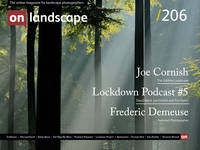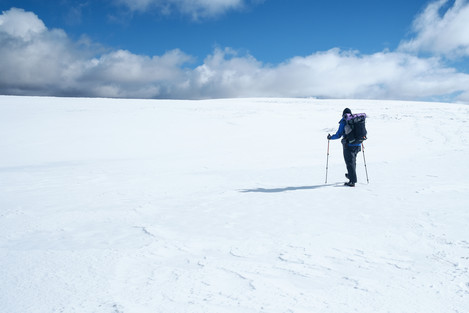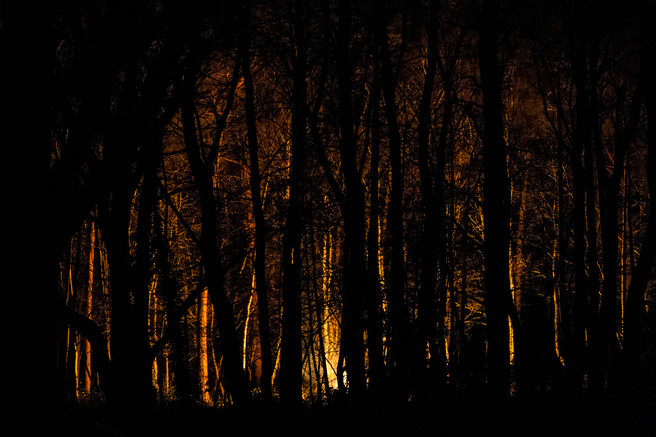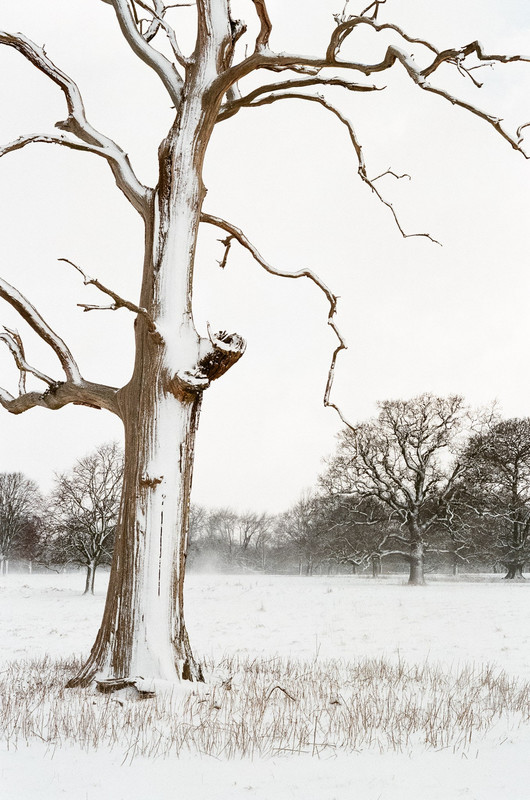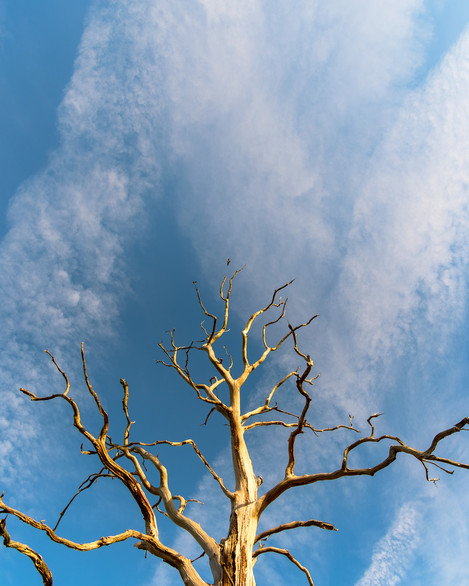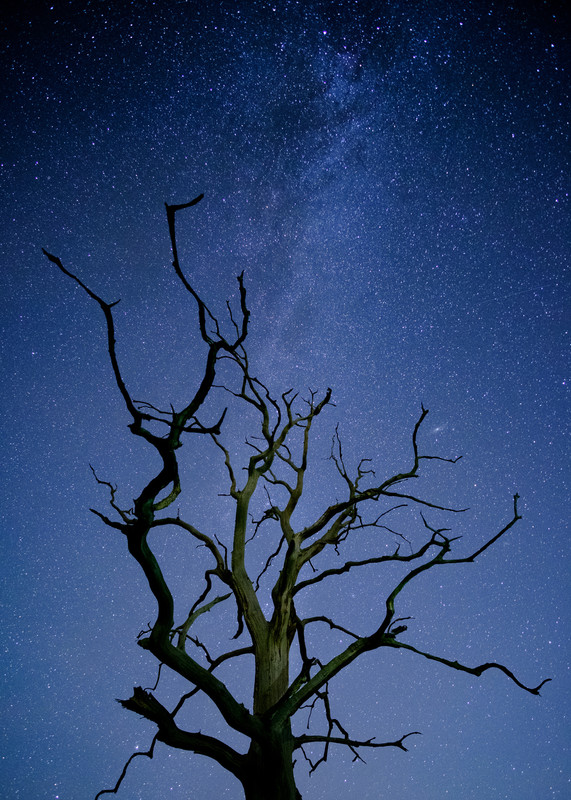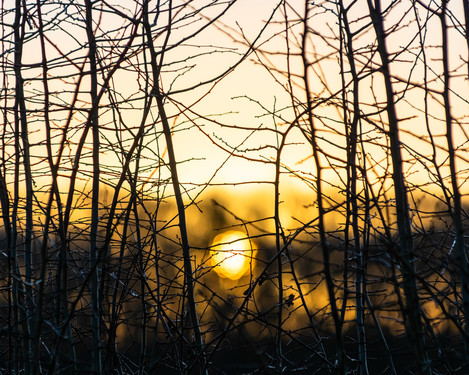A path to self-expression

Alex Roddie
Alex Roddie is a professional editor, writer, and occasionally photographer active in UK outdoors print media. He’s editor of the magazines Sidetracked and Like the Wind, and regularly writes for The Great Outdoors. He’s passionate about analogue photography although rarely dares take his vintage film cameras out for a spin in winter conditions. Alex is based in Scotland with his wife Hannah.
I'd never really had the confidence to think of myself as a landscape photographer, even though taking photographs of landscapes had been part of my job for years. It took tragedy, a process of maturation, and several pairs of worn-out boots to find a path to self-expression in what many would consider a bland and very agricultural part of the UK.
Nowadays, many jobs – especially creative freelance ones – involve elements of professional photography but not the whole package. That's certainly been the case for me. I've been a regularly published outdoor writer since 2015. When I submit a feature about backpacking or mountaineering, the editor expects quality photographs that document the trip and illustrate the story. I soon optimised my photography for what editors want: obvious mountain landscapes with a human element and composition that would make a good double-page spread.
There never seemed to be anything of interest to photograph in my local Lincolnshire countryside. At the time, landscape photography was all about 'epic' mountain scenery and maximum drama.
While I love the photographic side of my job, it didn't take long for me to figure out that I was rarely creating images for myself. I didn't know how. I was working to a brief, and because this side of my career began to take off in parallel with my development as a photographer, I never got the chance to figure out what my own vision was beyond taking pictures that looked 'good'. Did I have anything of personal value to say with my images, or were they just illustrations?
I'd had some positive feedback, and I knew that editors liked my photography, but I had no idea what it meant to me. By late 2017 I had figured out that validation in the form of likes on social media meant nothing. Although I didn't know it at the time, I was desperately seeking for an artistic vision.
Opportunity
In 2017 I began a new habit: I started to walk five miles each morning before breakfast. Over the months, this repeated immersion in my local area started to change my way of seeing. I noticed more. What had once been a bland patchwork of fields and scrubby woods became something entirely different. Slowly, a delicate enchantment began to illuminate this place.
Of course, light helped. My slot for walking was 6.30am to 8.00am. At certain times of year, I'd catch the sunrise, and I started to learn where the Belt of Venus would fall, which sections of my walk spoke to me in different ways. I carried my camera, but it took time before I started to capture anything more than visual experiments.
One particular dead tree I passed every morning stood out as an obvious subject. This grand old staghead, isolated in the Gunby parkland, delighted me with its various subtle moods. It soon gained the nickname of 'the Poet'. I realised early on that I wanted – needed – to say something about the Poet, but I didn't know what it was communicating to me, and that's why early attempts to create an image at this spot were failures.
As I learned to listen, I started to see the potential for personally meaningful images here. Something was missing, though. Hundreds of miles of hiking through this small patchwork of woods and fields, over a long period, had given me the fuel I needed, but I lacked a spark to ignite it.
Grief
In February 2018, tragically, I lost my dad to non-Hodgkin's lymphoma. A lot changed for me and my family during his long illness. Before his death, I struggled with anxiety, flirted with burnout, earned my first grey hairs, and asked my girlfriend to marry me. Afterwards, I felt like a completely different person.
It's no coincidence that I created the first personally meaningful image of the tree I called the Poet one week before my dad's funeral. The so-called 'Beast from the East' had carpeted Britain in deep snow that February. In its aftermath, I'd gone walking in the Gunby estate with Dad's old Spotmatic loaded up with Fujifilm Superia 400, and as I studied the Poet something seemed to click in my head – a harmony of my familiarity with this subject and my renewed perspective.
I knew what it was telling me now. It was telling a story of infinity and ephemerality, of isolation and connection, and a frank, unsettling look directly into death's face. I'd been walking past this skeletal form for so long without really thinking about the fact that it was a dead organism, braced against every passing gale, casting shadows and soaking in rain, etching patterns against the sky, whispering verses to passing walkers. Dead but very much alive. As I began the long process of sorting through my father's photographs and writings, this resonated with me.
This moment with the Poet was the catalyst. A personal maturing had combined with photographic opportunity to change how I saw this landscape.
Looking for the glow
I planned two more images of the Poet that express some element of what this subject means to me.
The first, 'Summer swift', was captured after several weeks studying the swifts that would perch in the Poet's upper branches. I wanted to capture a swift soaring at the tree's uppermost apex against broad brushstrokes of cloud, preferably in light that showcased the interesting textures on the branches. I succeeded in August 2018. To me it speaks of hope and rebirth – again, it's no coincidence that Hannah and I got married three months earlier – and maybe also something about this subject's remarkable breadth of emotion.
The second, 'The Poet, embracing infinity', had been previsualised more or less since that first image of the tree in the snow. I wanted to capture the tree against the Milky Way – an otherworldly form, again representing permanence while accentuating the subject's more alien and unnerving qualities. I light-painted with a green torch during the exposure to add detail to the trunk and shift the mood.
Since then, I've begun to collect images that might be considered riffs on a theme. My subjects are almost always trees. I look for ephemeral light that infuses an otherwise ordinary landscape with fleeting magic, and I often seek to render the organic components of the scene as stark silhouettes, playing with structures and framed skies, looking for hidden portals and pathways. There's nothing original in this, of course – better photographers than me have been doing it for a long time, but this has become the way I interpret a landscape others might consider dull. There's so much magic here.
I am trying to say something about fragility and vulnerability too. Not just my own, but that of the landscape itself, which is threatened by development and habitat destruction, and all the more so because most assume there is nothing of value here. A wood I walk through each morning was partially bulldozed in early 2020. This affected me more than I thought it would. The images I've captured in this place can never be recreated.
The path ahead
Even now, I struggle to think of myself as a 'proper' landscape photographer. Most of my mountain images are still created to a loose brief, although I have begun to find a more expressive way of doing this. It still takes effort to put myself in that more contemplative frame of mind required to create images for myself alone. Crucially, I feel that I am breaking away from trying to recreate images I've seen online, because I don't particularly care whether others see technical perfection or artistic merit in these photographs – they're about fulfilling a need within me, not seeking approval or meeting external requirements.
That said, I am becoming more discerning as I seek to improve my skills. Technical merit is a side I've long ignored because I saw it as largely irrelevant. Being agile and capturing emotion are more important, but achieving higher technical standards will be my next area of development as I seek to improve my composition skills. In the mountains, it's all about keeping kit weight down and capturing the images I need at a good enough level of quality without breaking the rhythm of my hike, but I can afford to be more deliberate for my personal work. As I grow and learn, it's my hope that my artistic vision will become more refined too.
Two years after my dad's death, the Poet withstood Storm Ciara, which brought winds of over 70mph to the Lincolnshire Wolds. Not a single branch on the old tree was damaged.

